$599
4 Stars
A compelling DAC that sounds just spiffy using hi-res files, and is only let down (slightly) by its budget-look presentation.
ECCENTRIC? GALLIC CHARM? Micromega’s MyDAC is the French company’s take on the high-performance affordable external digital-to-analogue converter. Like most products that originate in France, it’s a little bit different but it’s filled with a certain Gallic charm that goes a long way to conquering any hesitations one might have regarding its eccentricities.
Features & Construction
On first glance, you’d be forgiven for thinking that the MyDAC could just as well have been named the MyPlasticBox, because that’s basically what the chassis is – a lightweight plastic box that you might once have bought at a Dick Smith store for a high school science project. As far as initial impressions go, this isn’t a great one, and it’s not helped by the front mounted rotary source selection switch, which is said to be anodised aluminium but looks and feels like one you’d find on a $20 department store radio. That’s often what happens when a product is built in its country of origin to give it a point of difference, and there’s little doubt that the chassis would be quite different if Chinese manufacture had saved some Francs.
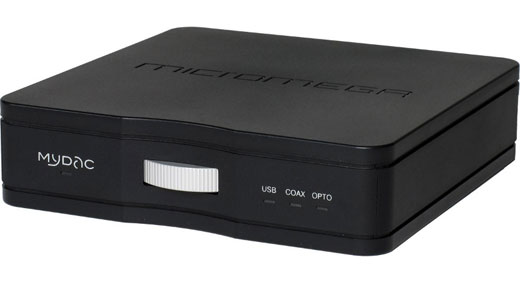 Dig a little deeper and you’ll find that the real attention has been lavished on the inside, where it really counts. Micromega has paid some careful attention to the engineering of the MyDAC, with features such as the inclusion of dual low jitter master clocks, one handling all multiples of 44.1kHz, the other looking after any multiples of the 48kHz frequency. Each clock has its own dedicated low-noise power supply, which is fed by a main power supply that’s described as being an “extremely fast, ultra low noise audio” design. In addition, Micromega has ensured that there are no electrolytic capacitors in the power supply or in the signal path.
Dig a little deeper and you’ll find that the real attention has been lavished on the inside, where it really counts. Micromega has paid some careful attention to the engineering of the MyDAC, with features such as the inclusion of dual low jitter master clocks, one handling all multiples of 44.1kHz, the other looking after any multiples of the 48kHz frequency. Each clock has its own dedicated low-noise power supply, which is fed by a main power supply that’s described as being an “extremely fast, ultra low noise audio” design. In addition, Micromega has ensured that there are no electrolytic capacitors in the power supply or in the signal path.
The rotary switch cycles through standby mode and into the USB, Coax and Optical inputs. The USB runs in asynchronous mode, handles up to a 24bits/192kHz signal, and deals with both Class 1 and Class 2 modes. No drivers are needed in Mac environments but a specific USB driver will need to be downloaded for PC based Class 2 installations. Round the back, the MyDAC is pretty straightforward, with all the usual inputs (USB, Coaxial and Optical), a couple of RCA outputs, and a small switch to select USB Class 1 or Class 2 mode. The MyDAC gets its power from a figure-8 terminated power cord, not a Wallwart PSU, so a simple IEC to figure-8 adapter will allow the use of aftermarket power cords for those who just can’t bear to leave things be.
Sound Quality
First up, I wanted to hear the MyDAC paired with a CD transport, so I set up my Marantz SA8260 to feed the MyDAC via a basic Audioquest coax cable. The MyDAC then ran into a StereoKnight passive preamp, Sachem monoblock power amps and Theophany M5 Series 2 floorstanding speakers using Slinkylinks interconnects and Monster speaker cables.
Once the music started, I found that it took no more than a few minutes to more-or-less forget about the low-key exterior of the MyDAC and get hooked on its upmarket sound. Listening to ‘Promises’ from The Cream Of Clapton compilation CD showed that the MyDAC put a lot of energy into the music and dynamically it was right on the money, coming very close to matching the lively Marantz in this regard. More importantly, this DAC cut right through to the core of the music and sounded quite high-res, especially at the top-end, even though the source was pure 16/44. Clapton’s vocals were nicely detailed, as were the instruments and backing vocals, with good separation and image placement, as well as a lot of air and space around the presentation.
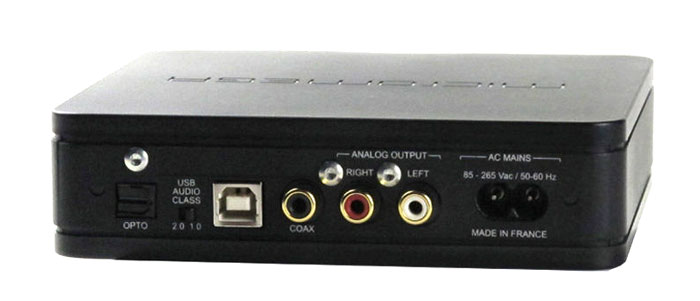 There’s a real sense of precision and focus to the MyDAC’s performance but it’s got a deft touch with the emotional elements of the music as well – take Curt Cobain’s wailing on ‘Where Did You Sleep Last Night?’ from Nirvana’s MTV Unplugged In New York, for example. The MyDAC’s handling of the vocals brought in a much-needed intensity and fragility; this emotional connection is as much a matter of getting the textures and tonality right as it is about presenting power and confidence, all of which it does very well indeed. What it did for the guitar wasn’t half bad either.
There’s a real sense of precision and focus to the MyDAC’s performance but it’s got a deft touch with the emotional elements of the music as well – take Curt Cobain’s wailing on ‘Where Did You Sleep Last Night?’ from Nirvana’s MTV Unplugged In New York, for example. The MyDAC’s handling of the vocals brought in a much-needed intensity and fragility; this emotional connection is as much a matter of getting the textures and tonality right as it is about presenting power and confidence, all of which it does very well indeed. What it did for the guitar wasn’t half bad either.
Despite the top-end clarity, the MyDAC doesn’t really exaggerate sibilant vocals, it’s explicit but never harsh, at least in my system – a bright speaker paired with a forward amplifier might not match the MyDAC all that well. The midrange is smooth and quite sophisticated but that delectable top-end is the MyDAC’s key strength and something I really enjoyed, especially with high-resolution files, which is where this DAC really comes into its own.
High-Res Playback
With CD playback, there was little to pick between it and the Marantz. With high res files however, the MyDAC was well ahead of the old silver disc spinner, sounding very classy indeed, which is usually what happens when you ditch a 30-year-old recording protocol and start feeding DAC’s like this some high-resolution downloads.
I hooked it up to my MacBook Pro and started running thorough the contents of my “high-res downloads” folder. The air around the instruments and the three-dimensional stage went from expansive to “concert-hall”, with a much deeper sense of the acoustic space (assuming of course that the recording engineers were sympathetic enough to capture it). The levels of detail took a big leap upwards, and everything from vocal textures to the sound of instruments and ambient noise or decay was rendered with a very high level of transparency. The sound of drumsticks on skins, the ringing of cymbals or the violent roar of a viciously wielded bass guitar had more life to them in every way.
The attention to detail poured into the MyDAC by Micromega’s engineers has paid off in a big way, and it’s most obvious when the recordings are both high quality and high resolution. The only downside of the MyDAC’s performance was a very slight lack of power at the very bottom of the frequency range, where the bass didn’t quite have the impact it should have on my system. I didn’t spend too much time comparing the sound quality of the USB and coaxial inputs with identical quality tracks. but the USB input did seem to have a marginal edge over coax, sounding a touch more refined and cleaner.
Low-Res Playback? Really?
I also used the MyDAC in a far lower-resolution environment, connecting it up to QED’s $249 uPlay Plus Bluetooth receiver via the latter’s optical output. It might seem counterintuitive (i.e. stupid) to use a $599 DAC to listen to 64 and 128kbps internet radio streams from a smartphone, and in truth, the difference between the DAC in the uPlay Plus and the MyDAC at this level was minimal – rubbish in equals rubbish out you might say – and when so much of the original file has been discarded, there’s only so much that can be done. This isn’t to say that these streams aren’t worth listening to; quite the opposite, but that’s a tale to be taken up in my current blog series (which starts here). With 320kbps and CD quality files streamed via Bluetooth, the MyDAC did make an appreciable difference to the sound quality, bringing some of that lovely top end sparkle to the party.
It would be great if Micromega included some kind of Bluetooth functionality to support internet radio streams from the many smartphone apps I’m now using. For instance, Rotel offers a Bluetooth dongle in its RDD-06 DAC (reviewed here). This kind of connectivity would add to the MyDAC’s versatility in my system by allowing me to have the source in my hand instead of in a dock at the wrong end of the room. Some indicator lights to show the frequency of the incoming signal wouldn’t go amiss either. but as it stands, the MyDAC is something I could happily live with in my system.
Conclusion
Would this be a better product if its case were a substantial chunk of machined aluminium? Of course it would, but if the price tag subsequently went up by the expected two hundred dollars or so, then I might have to pass on the metal version and I’d stick with the plastic.
Generally, I found that the MyDAC’s construction wasn’t an issue until I packed it up to take back to the local agent, or when I had to use the lacklustre rotary control. The MyDAC sounds good with CD, great with high-res files and is very close to winning a five star rating. The construction will no doubt count against it to some degree in the eyes of some buyers (myself included), if only from a pride of ownership perspective – the Made in France kudos won’t be enough to make them disregard the construction.
Cutting to the chase, what I experienced right through the review was the addictive sensation of listening to a highly competent digital source that is superb at playing back high-resolution files. Micromega has crammed a great deal of audio goodness into that chassis, and the price is below some of its key rivals; all of which has to make this a compelling product to add to any sub-$1000 DAC list. I’d recommend an audition. ASHLEY KRAMER



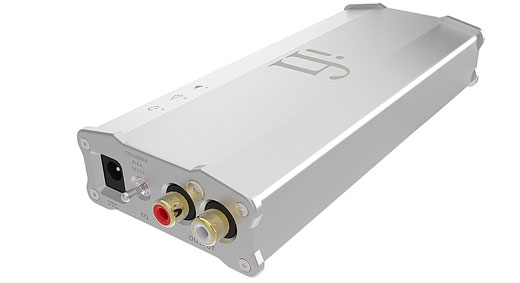

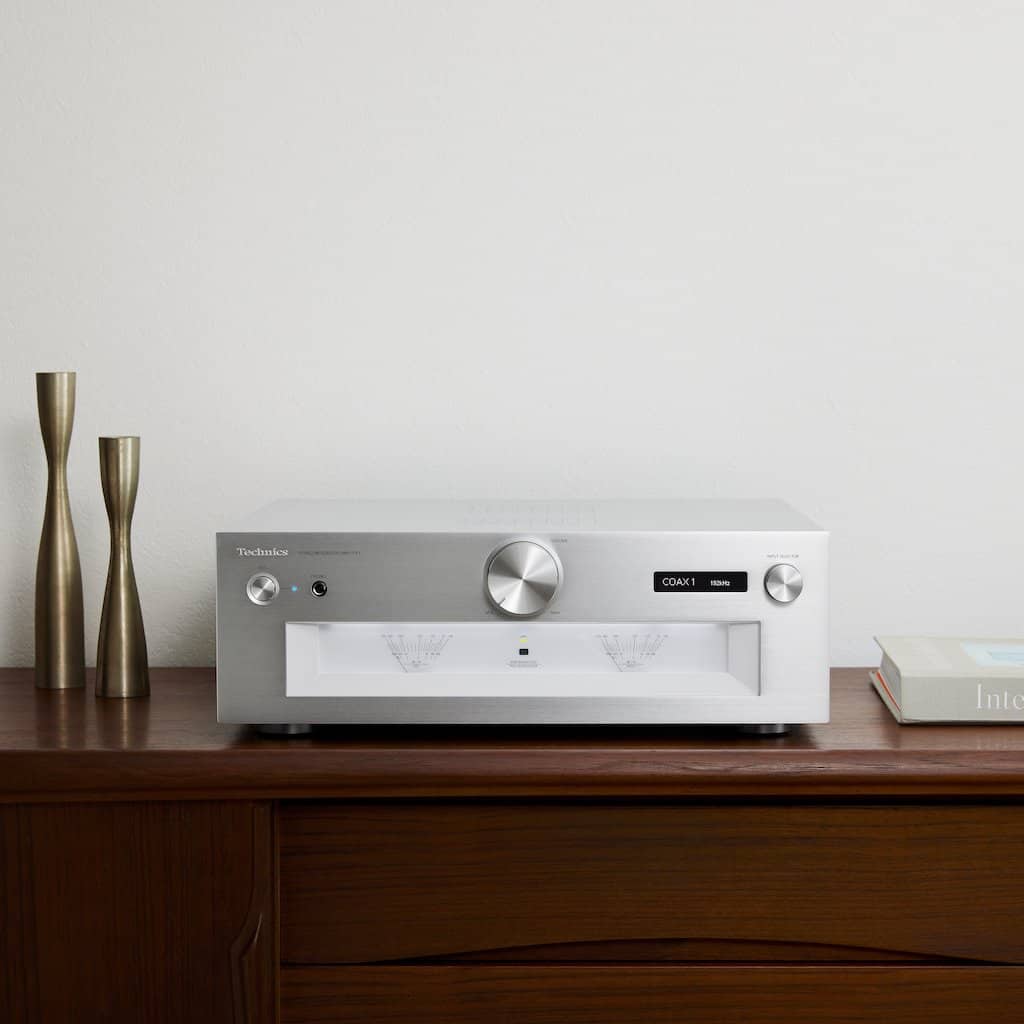
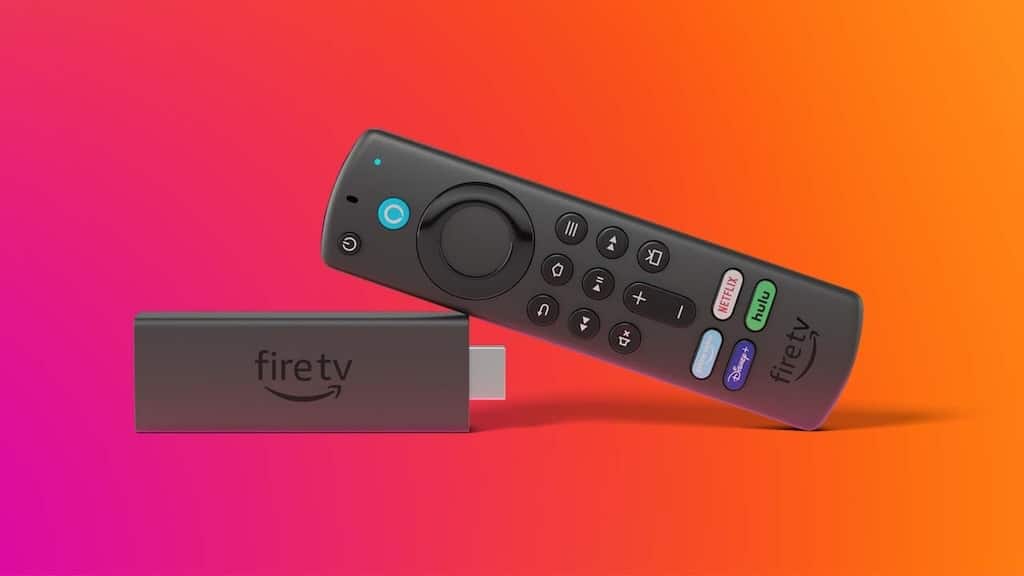
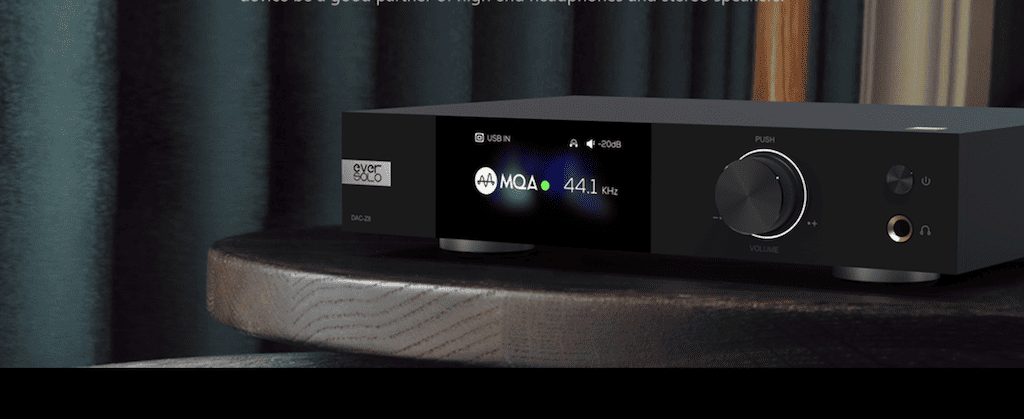
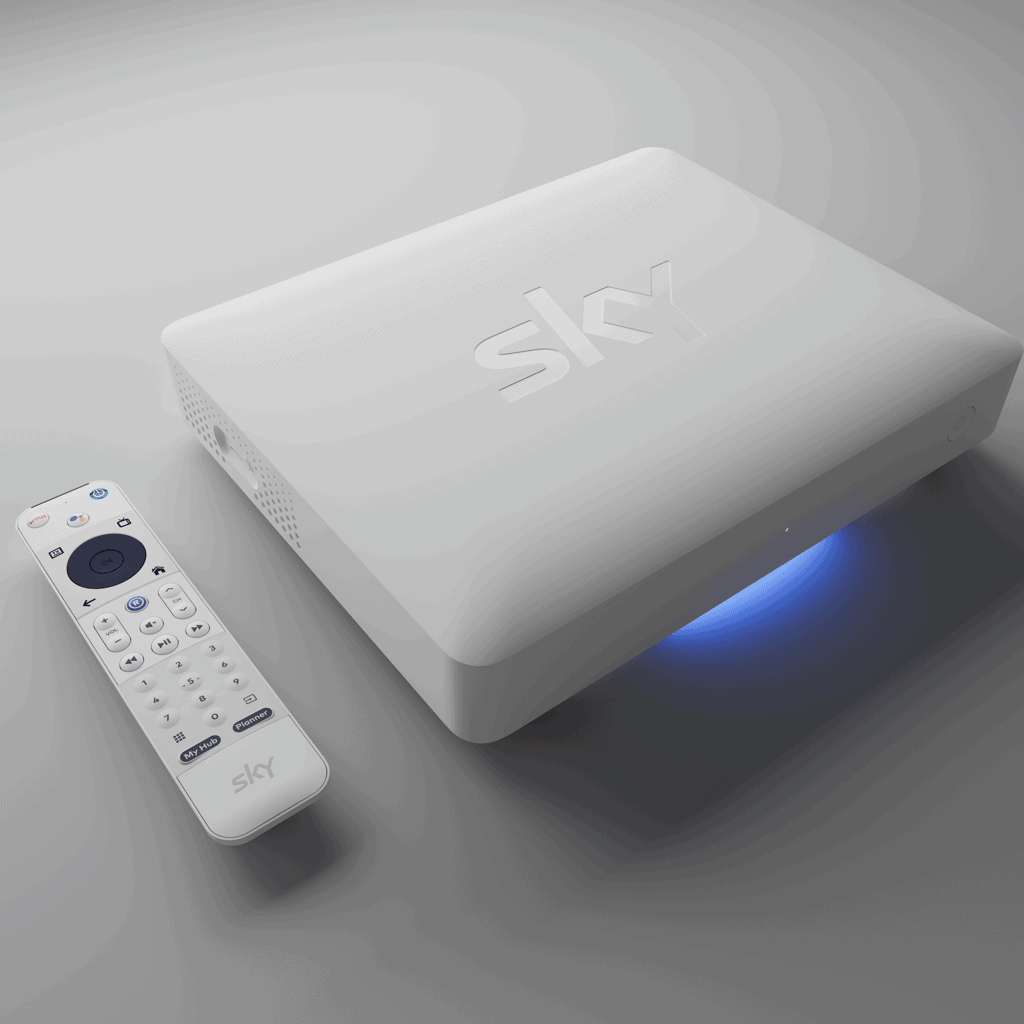
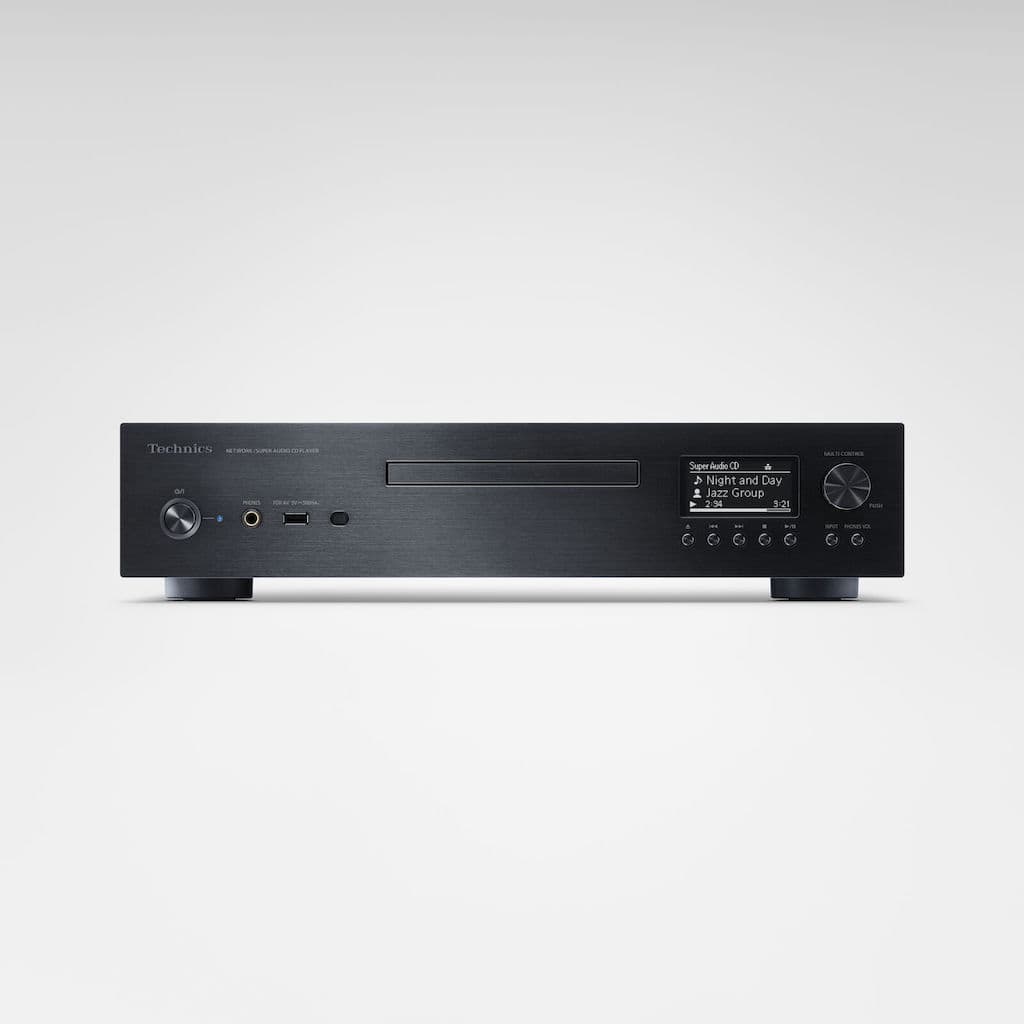

Did your unit emit an audible high frequency whirl when turned on? Mine does and several others, too.
Not at all, I didn’t hear a thing. Does that high frequency sound come from the DAC itself or do you hear it from the speakers?
I have a good modesty priced system—Acuras power amp, Band K preamp, Project III turntable and two CD players–a new NAD 546 and a sony 5 CD player that is 20 or so years old.
The speakers now are NHT Classic 3s with a 10 inch NHT subwoofer.
I recently purchase the Micromega DAC and have been comparing the sound of the CDs on each player is attached by optical cable to the Sony–now a transport.
I can hear the differences. The NAS has a leaner or tighter sound and sounds a bit smaller and a bit more precise. The Micromega has a fuller and a bit more dynamic sound that is larger and more spacious. The differences are subtle with classical music as is the level of dimensionality.
Its fun to listen to each–and then to lps on the Project III with their own distinctive lifelike sound–but given the age of that my record collection, prone to too many pops.